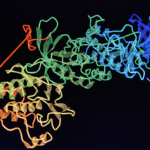After 50 years of research, physicists have found evidence that the elusive subatomic quasiparticle called odderon actually exists.
For most of us, physics terms like odderon are (and always will be) part of science fiction. However, this is not the view of the scientific community, whose determined members spent almost half a century searching (without much success) for this particular particle.
Now, a research team of Hungarian and Swedish physicists has discovered the odderon by analysing experimental data from the Large Hadron Collider (LHC) at the Swiss-based European Organization for Nuclear Research, better known as CERN. With the support of the EU-funded MorePheno project, the physicists have published a paper describing their findings in The European Physics Journal C.
It all began in 1973, when calculations led to the theorisation that a previously unknown subatomic quasiparticle might exist, setting in motion an international search for the odderon. As described in a paper published on the SciTechDaily website, an odderon forms “when protons collide in high-energy collisions and, in some cases, do not break apart, but bounce off each other and scatter”. To prove the existence of this hitherto mythical particle, scientists used detailed measurements of high-energy collisions obtained with the LHC, the world’s largest and most powerful particle accelerator.
The odderon test
In the search for odderons, CERN researchers concentrated on hadrons, a family of subatomic particles that includes protons and neutrons. Hadrons consist of two or more quarks that are held together (or glued) by elementary particles called gluons. Given that, in previous collision observations, only an even number of gluons were exchanged between the protons, finding an odd number (a three-gluon state) would indicate the presence of an odderon.
The scientists performed extensive analyses of elastic proton-proton (pp) and proton-antiproton (pp¯) collisions at high energies. They studied the scaling properties of data from the ISR and Tevatron colliders, as well as data sets provided by the TOTEM Collaboration in the teraelectronvolt (TeV) energy range. “By fitting the TOTEM pp data from √s = 7 TeV to 2.76 and 1.96 TeV, and comparing them with pp¯ data at 1.96 TeV, our results constitute evidence for a t-channel odderon exchange at TeV energies, with a significance of at least 6.26σ,” the authors explain in the study. “This is a milestone for particle physics! It is fantastic to contribute to a better understanding of matter – the building blocks of our world,” reported study co-author Roman Pasechnik of Lund University (Sweden), the project coordinator, in a paper.
The MorePheno (Collider Phenomenology and Event Generators) project ran from November 2015 to October 2020. Its aim was to carry out frontline research that has direct implications for event generators, libraries of “software” that generate high-energy particle physics events such as those that occur in particle accelerators and collider experiments. Roman Pasechnik’s last sentence attests to his success: “We worked with some of the best particle physicists in the world, who were surprised when we published our results.







Leave a Reply